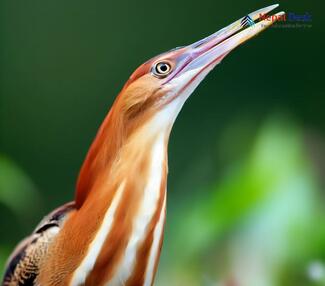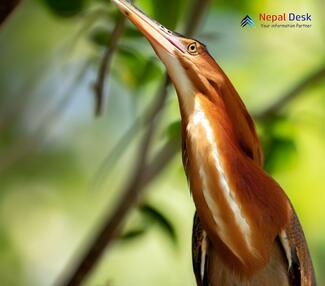The cinnamon bittern, also known as the chestnut bittern (Ixobrychus cinnamomeus), is a small bird native to the Old World. It thrives in tropical and subtropical regions throughout Asia, spanning from Nepal and India, all the way to China and Indonesia. In 1789, German naturalist Johann Friedrich Gmelin first described the cinnamon bittern. He grouped it alongside herons, cranes, egrets, and bitterns under the genus Ardea, naming it Ardea cinnamomea. Gmelin's description drew inspiration from John Latham's "Chinese heron," featured in his multi-volume series, A General Synopsis of Birds. Latham's description was based on an incomplete specimen housed in the British Museum.
Today, the cinnamon bittern is classified within the Ixobrychus genus, introduced by Swedish naturalist Gustaf Johan Billberg in 1828. This genus name combines the Ancient Greek words "ixias," meaning a reed-like plant, and "brukhomai," meaning to bellow. Its specific epithet "cinnamomeus" originates from the Latin word for "cinnamon-colored." The species is monotypic, with no recognized subspecies.
In this article, we shall be looking at the various aspects of this beautiful bird.
A Mysterious Inhabitant of Wetlands and Marshes
The Cinnamon Bittern is commonly found in the marshes and wetlands of Nepal. These environments provide essential cover for the Bittern, allowing it to blend into its surroundings seamlessly using its unique plumage. Staying hidden is crucial for this bird, as it relies on stealth to locate and catch its prey, primarily consisting of small fish, insects, and amphibians.
Body Features That Make It Stand Out
The most striking feature of the Cinnamon Bittern is its distinctive coloration - a stunning mix of earthy cinnamon and russet tones. Its short neck and small head give this bird a stocky appearance, while its relatively large wingspan allows for an agile flight when navigating through dense wetland vegetation.
Breeding Habits Worth Observing
The breeding habits of the Cinnamon Bittern are another fascinating aspect of this elusive species. Significantly, both male and female Bitterns take part in constructing their nests which are often found hidden amidst dense reeds. Additionally, these nests provide a safe haven for their eggs that vary in shades of brown to blend perfectly with their surroundings.
The Role of Conservation Efforts
Unfortunately, due to factors such as habitat destruction and climate change, the populations of the Cinnamon Bittern have been dwindling in recent years. This makes conservation efforts all the more critical for protecting this species from possible extinction. Organizations like Bird Conservation Nepal are working tirelessly to conserve these birds and their habitats, so they continue to be a part of Nepal's rich biodiversity.
In conclusion, the Cinnamon Bittern serves as a beautiful example of the unique wildlife that can be found in Nepal. With its intriguing habits, remarkable appearance, and ever-shrinking habitat, the story of the Cinnamon Bittern is one that deserves attention and protection. As nature enthusiasts or even casual visitors to Nepal, let's appreciate the role this rare and fascinating species plays in the country's ecological tapestry and support efforts to conserve its habitat for generations to come.




